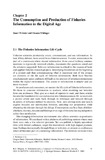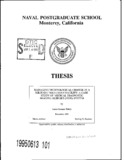Chapter 2: The consumption and production of fisheries information in the digital age
| dc.contributor.author | Webster, Janet G. | |
| dc.contributor.author | Uhlinger, Eleanor | |
| dc.date.accessioned | 2014-04-28T21:55:36Z | |
| dc.date.available | 2014-04-28T21:55:36Z | |
| dc.date.issued | 2009 | |
| dc.identifier.uri | https://hdl.handle.net/10945/41039 | |
| dc.description | Chapter 2 from this book: B.A. Megrey, E. Moksness (eds.), Computers in Fisheries Research, 2nd ed. | en_US |
| dc.description | The article of record as published may be found at http://dx.doi.org/10.1007/978-1-4020-8636-6_2, _ Springer ScienceþBusiness Media B.V. 2009 | en_US |
| dc.description.abstract | Fisheries scientists persistently create, communicate, and use information. In fact, if they did not, there would be no fisheries science. To exist, science must be part of a continuum where shared information, from casual hallway communications to rigorously reviewed articles, documents the questions asked and the solutions suggested. Relevant information is critical to the success of basic and applied fisheries research projects. Identifying the relevant at the beginning of a project and then communicating what is important out of the project are elements of the life cycle of fisheries information. Both have become simultaneously easier and more difficult as the amount of information increases within the digital environment. The access to information is simpler and yet more nuanced. The following attempts to assist with that decision making by describing approaches, options and challenges to consuming relevant information and then producing, or communicating, the same. On the consumption side, we will discuss how to identify, obtain and manage fisheries information. As tools change, the focus will be on strategies with specific examples of current tools. On the production end, we will explain the decisions to be made regarding intended audiences and possible outlets, publishing options, copyright considerations, access points, and archiving responsibilities. Finally, we will return to the electronic information environment to put the consumption strategies and publishing decisions into a larger context. Here we will touch on the economics of publishing and access, possible legal issues, the concept of the digital library, and information integrity and preservation. | en_US |
| dc.rights | This publication is a work of the U.S. Government as defined in Title 17, United States Code, Section 101. Copyright protection is not available for this work in the United States. | en_US |
| dc.title | Chapter 2: The consumption and production of fisheries information in the digital age | en_US |
| dc.type | Book Chapter | en_US |
| dc.subject.author | scholarly communication | en_US |
| dc.subject.author | information seeking | en_US |





